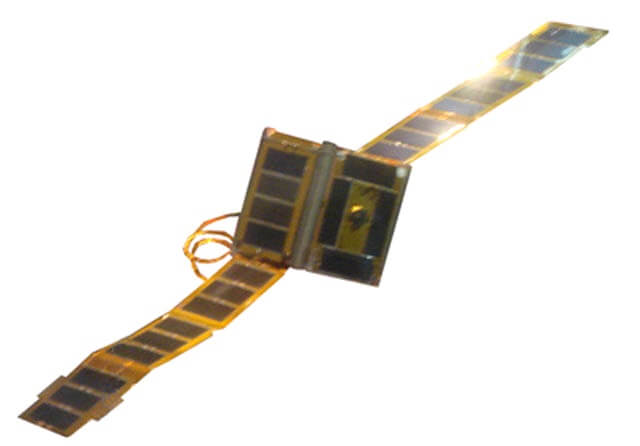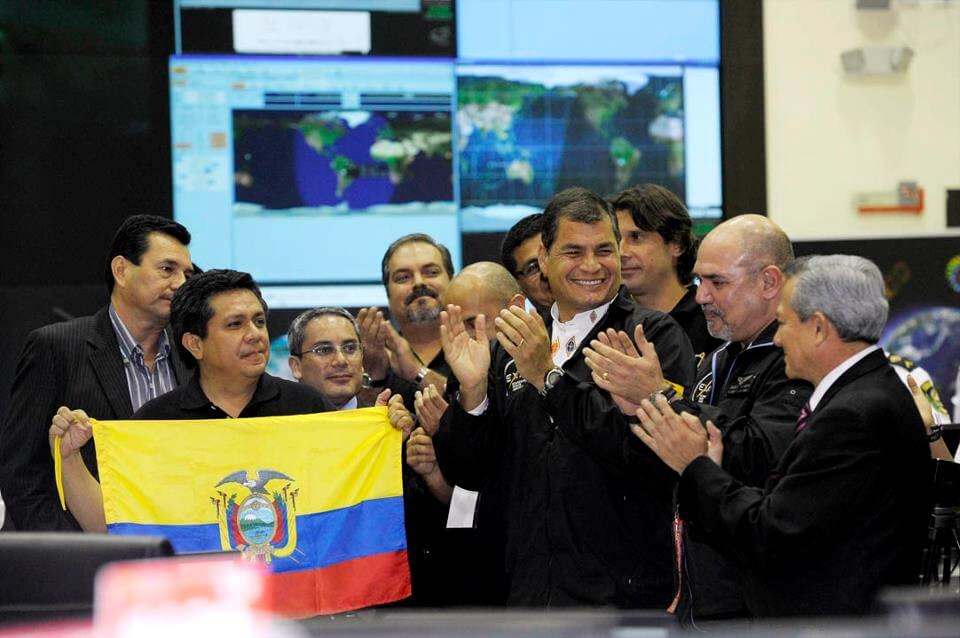On the morning of the twenty-third of May, just above Madagascar, the first Ecuadorian satellite called "Pegasus" passed through a cloud of debris from an old Russian launcher and suffered a direct hit that disabled its systems almost completely. Mieded Farina will try to explain why this event changes the severity of the pollution situation in space and what can and should be done

by Miedd Farinta
In the morning news, we hear about "almost-miss" events that illustrate the risk that exists today to satellites as a result of a polluted space environment full of debris. The nanosatellite industry, which is in the midst of a global boom, and which, according to research carried out by SpaceWorks, is expected to reach about 200 new satellites per year by the end of the decade, was seemingly immune or indifferent to the threat of space debris. The assumption was that since these are small satellites with dimensions of several tens of centimeters, the chance of being damaged is almost zero. Last night the chance became a risk.
Space junk problem - background
Space junk or space debris is defined in Wikipedia as "the collection of objects that surround the Earth, are there as a result of human activity, and are no longer in use". Until the last few years, the treatment of space junk was reminiscent of the treatment received by the pollution of the oceans a few decades ago. Bottom line (almost) no one is doing anything but everyone is talking about it.
Of the approximately twenty-one thousand objects with a diameter of ten centimeters or more that are under surveillance, only three thousand five hundred are active satellites.
In the sixties and seventies of the previous millennium, the United States and the Soviet Union developed anti-satellite missiles (ASAT). As part of the balance of terror and the arms race that accompanied the period. The development of these weapons was accompanied by firing tests in which dozens of satellites were destroyed, with each country making sure to destroy its space assets in order not to create a precedent. But the amount of fragments created as a result of this period is enormous.
In 1978, Donald J. Kessler, a researcher at NASA, published an article that analyzed the state of space junk after the end of the period of experiments with weapons to destroy satellites. The study revealed that approximately forty-two percent of all fractures tracked at the time were the result of only 19 collision events. Kessler even warned against a situation in the future where the density of fragments will be such that another significant event will create a chain reaction of sub-collisions. The phenomenon was nicknamed "Kessler's syndrome".
The first Ecuadorian satellite - Pegasus
The nanosatellite revolution, which led to a dramatic reduction in the price of entry into space missions using off-the-shelf components, allowed, among other things, countries with poor means to design, build and launch nanosatellites. With the help of a nano-satellite project whose total cost does not exceed five million dollars, it is possible to accumulate knowledge and build assets that will be used in the future in the construction of larger and more complicated satellites. Among the countries that used nanosatellite platforms as an entrance ticket to the space club are Poland, Hungary, Romania, Estonia and Ecuador. Israel, by the way, has not yet launched a single nanosatellite.
Commander Ronnie Nader, one of the founders of the Ecuadorian space agency EXA, was the living spirit behind the project. Roni, who was fully trained as a cosmonaut, initiated the Pegasus project back in 2008. The main mission of the satellite, apart from being an engineering means to build space capacity for Ecuador, was to take video footage of the Earth in general and of South America in particular.
The project progressed according to plan and the satellite was ready at the end of 2011 for launch on a Russian Dnieper launcher.
Delays in the main satellite program on the same launcher postponed the launch date to April 2012, and later to September 2012, December 2012 and finally to an unknown date at the end of 2013. In a joint decision between the Ecuadorian Space Agency and the company responsible for coordinating the launches (the Dutch company ISL headed by Mr. Abe Bonnema ) replaced the Ecuadorian Space Agency with a launcher and turned to a launcher on a Chinese Long March rocket, who for the first time expressed interest and willingness to launch nanosatellites.
And so on the twenty-fifth of April, 2013, the satellite, which weighs about 1.26 kilograms and has a wingspan of 70 centimeters, was successfully launched into a low sun tracking orbit at an altitude of 650 kilometers above the earth's surface. The expectations and the tension to receive the first video signals from the satellite were difficult, but a few days after the solar panels were retired and the satellite began to operate, the long-awaited moment arrived, and a colorful video image of South America covered the giant screens at the ground station in Ecuador.
The joy was enormous, and in Ecuador, which is best known for its soccer team, fine coffee and chocolate, a holiday was declared. The small country's civilian space agency has done it in a big way

On May 22, last Wednesday, after almost a month of normal operation of the satellite, Roni posted on his Twitter that there is a fear that the orbit of the satellite, which is not equipped with engines and therefore cannot change its course, will pass very close to fragments of a Russian Cyclone launcher that has been in orbit since 1985 and was identified by the North American Aerospace Defense Command (NORAD) as object 15890. The automatic warning systems at the Joint Space Operations Center warned of a direct hit and all that was left was to wait and see what would happen. Indeed, early in the morning of the twenty-third of May, the satellite's communication signals stopped suddenly, and experts who analyzed the events estimated that a debris cloud that was adjacent to the Russian cyclone did hit the small Ecuadorian satellite head-on. which effectively became the first recorded collision of a space fragment with a nanosatellite.
Moreover, the experts claim that there is a high chance that the same debris cloud also hit an Argentine nanosatellite called Cubebug-1 that was launched together with Pegasus on the Chinese launcher.
The highest probability is that the surfaces of the sun were hit directly and put the satellite into an uncontrolled and uncontrolled spin.
Our hope is not lost yet
On Thursday the twenty-third of May in the evening, a heartbroken Neider said "Ecuador still has a satellite, the Ecuadorian people still have Pegasus", and added "the motivation to launch the second satellite called Krysaor and scheduled for launch in August of this year on a Russian launcher only got stronger", to the question of the journalists he said that the satellite He was insured and soon they would begin the process of filing a claim, but in the early afternoon of the twenty-fourth of May it became clear that, like the mythical beast for which the little satellite is named, he too has magical powers, and communication between the satellite and the ground station was resumed. There is still no certainty to confirm what happened and what the extent of the damage is, but fragments apparently hit one of the sun's spread surfaces, which caused the satellite to spin, but did not damage the main systems in the satellite's body. The excited Roni Neider tweeted on his Twitter account "What a wonderful feeling to wake up to the sounds of the telemetry launched from the satellite, simply beautiful space engineering"
What would be the right thing to do in the future?
The multitude of events related to the awareness of the space situation gave rise to a joint effort and close cooperation between Europe and the United States. It doesn't matter if the motivation is military or commercial, the fact that the space assets are under surveillance and control allows the transmission of information about dangers in increasingly smaller time cycles.
There is a real and growing need to take action and actively clean up the near space, otherwise we may find ourselves in a period where every launch and every satellite mission is in real and tangible danger of collision.
The writer is a space engineer, CEO of the SPACECIALIST company and serves as an expert in evaluating the risks and effects of space debris for satellite insurance companies and was related to insurance proposals for the Ecuadorian satellite.

One response
Hi Midd, my name is Blue Yitzchak, I am an entrepreneur and inventor of patents, I would be happy to interest you in my new venture 0544859988 Thank you